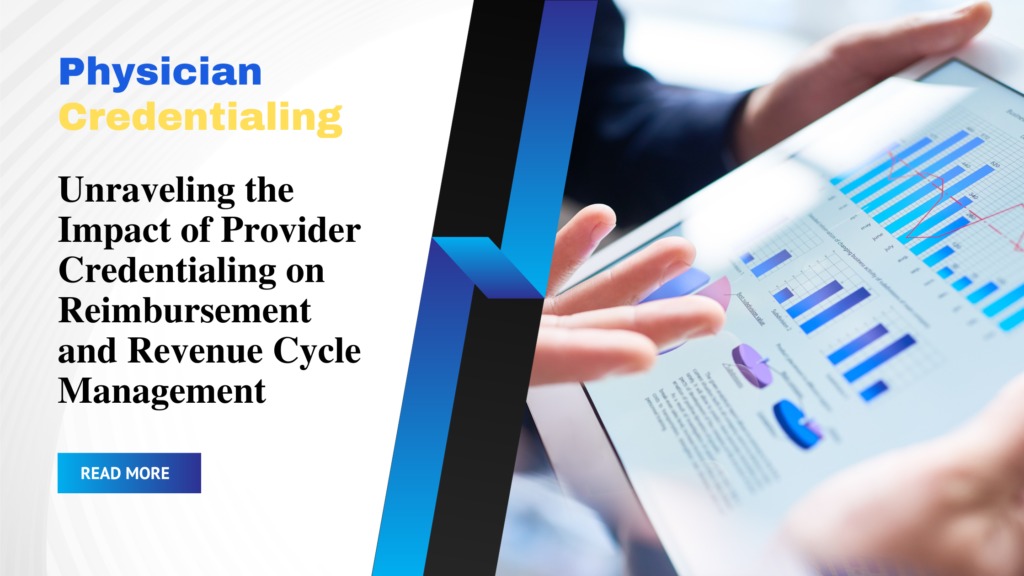Introduction:
In the intricate world of healthcare, where patient care meets financial viability, provider credentialing plays a pivotal role in shaping the reimbursement landscape and ensuring a streamlined revenue cycle management (RCM). This often-overlooked process is a cornerstone in the journey from patient service to financial reimbursement, influencing both the quality of care and the fiscal health of healthcare organizations.
Understanding Provider Credentialing:
Provider credentialing is the systematic process of verifying and validating the qualifications of healthcare professionals to ensure they meet the standards set by regulatory bodies and payers. This multifaceted process involves scrutinizing a provider’s education, training, licensure, certifications, and any relevant experience. The significance of accurate and up-to-date credentialing cannot be overstated, as it directly impacts an organization’s ability to receive timely and accurate reimbursements.
The Ripple Effect on Reimbursement:
Timely Reimbursements: The credentialing process, when efficiently executed, ensures that providers are credentialed and enrolled with various payers. This, in turn, facilitates smooth claims processing and minimizes delays in reimbursement. Timely reimbursements are crucial for maintaining cash flow and sustaining operational efficiency.
Reduced Claim Denials: Accurate provider credentialing helps in avoiding claim denials, a common challenge in revenue cycle management. When providers are properly credentialed, they are more likely to submit clean claims that comply with payer requirements, reducing the chances of rejections and denials.
Optimized Contract Negotiations: Credentialing information is fundamental during contract negotiations with payers. Organizations armed with accurate and up-to-date credentialing data can negotiate better reimbursement rates, terms, and conditions. This strategic advantage positively influences the financial health of the healthcare entity.
The Revenue Cycle Management Symphony:
Efficient Front-End Processes: Provider credentialing is an integral part of the front-end revenue cycle. Streamlining these processes ensures that accurate information is collected from the outset, setting the stage for a smooth and efficient revenue cycle.
Enhanced Data Accuracy: Credentialing acts as a data accuracy checkpoint. Inaccurate or outdated provider information can lead to billing errors, claim denials, and compliance issues. By maintaining accurate credentialing data, organizations can significantly improve the accuracy of their billing and coding processes.
Compliance and Risk Mitigation: Credentialing is not just about meeting payer requirements; it’s also a critical component of compliance and risk management. Adhering to regulatory standards safeguards organizations from legal repercussions and ensures the delivery of high-quality, safe patient care.
Conclusion:
Provider credentialing is more than a bureaucratic process; it is the linchpin connecting patient care to financial sustainability in the healthcare industry. By understanding and prioritizing the impact of credentialing on reimbursement and revenue cycle management, organizations can navigate the complex healthcare landscape more effectively. A proactive approach to provider credentialing is an investment in the financial health and long-term success of healthcare entities, ultimately fostering a balance between quality patient care and fiscal responsibility.
